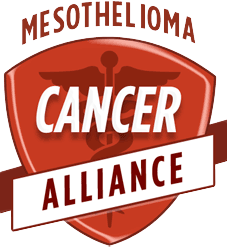This is a guest post from Emily Walsh of the Mesothelioma Cancer Alliance. She has some great things to consider as firefighters.

Subject: Safety decisions firefighters can make in order to reduce their risk of cancer.
Outline:
- Firefighter cancer statistics
- Best practices to reduce cancer risk. Specifically decisions firefighters can make
- What can the fire department/chief do or not do?
- Provide proper cancer awareness training
- Provide proper decontamination station
- What can the firefighter do or not do?
- Don’t take off SCBA during overhaul
- Shower immediately asap
- Don’t bring gear into car/living quarters where it make cause secondhand exposure to family
- The medical aspect behind toxins released during fires and cancer
- Particles, different types of toxins
- Latency period
- Conclude with a Healthy Lung Month call out
Making the Right Decisions to Stay Cancer Free
Cancer is the largest threat to firefighter safety today, but it wasn’t always this way. Before the increased use of synthetic materials in consumer goods, homes were mostly furnished with natural wood, metal, and cloth products that burned cleanly. Today, contradictory to expectations, the most dangerous thing about firefighting isn’t the fire itself, but the smoke. The smoke firefighters face today is a toxic soup of carcinogens. Everyone is exposed to trace amounts of chemicals in the home, including cleaning products, fire retardants and other coatings and chemicals; however, fires magnify this exposure when the chemicals are released as smoke. Firefighters get the brunt of this exposure.
In the last 15 years, cancer caused 61 percent of career firefighter line-of-duty deaths. Additionally, these first responders are nine percent more likely to be diagnosed with cancer than the general public, and that is simply because of their exposure. Even when firefighters enter a burning building in full turnout gear, smoke can enter unsealed gaps between the gloves and jacket sleeves, or residue on the helmet may later be inhaled. Tiny particles might make their way into the body via the lungs or skin absorption unless safety procedures are properly developed and followed to a T.
Safety procedures to reduce exposure to carcinogens – Jason
As of now, there isn’t a great system for detecting air purity during overhaul. Basing use of SCBA on carbon monoxide levels as some departments do is not an accurate depiction of all the other toxins possibly present in the air. A 2010 study of chemicals present in the overhaul stage of 38 structure fires found carcinogenic chemicals at or exceeding national and state OSHA levels included arsenic, benzene and formaldehyde among other dangerous gases such as nitrogen dioxide, hydrogen cyanide and others.
These toxins that come in various forms (particulates, vapors and gases) arise from the most common of homegoods: vinyl, cleaning products, Teflon coatings, furniture foam, etc., which are all otherwise seemingly harmless. The heat of the fire breaks down and releases chemicals and particles where they expand and move about the structure long after the fire is put out.
Some toxins are immediate irritants, like low levels of phosgene that causes itchy eyes and sore throats, or carbon monoxide (CO) that can cause dizziness, loss of consciousness and even death within minutes. Other side effects take years to develop. Asbestos is a mineral once used in many adhesive and insulation applications for its fire resistant properties. It was discovered that people exposed to asbestos were being diagnosed with mesothelioma after 20 or even 50 years because of the long latency period. In fact, mesothelioma is found in firefighters at twice the rate of the general public.
Firefighters enter their profession knowing there is a chance of danger. Fires can burn you, burning structures may collapse on you, many probably even know the harmful effects of CO exposure. What they may not expect are the numbers of men and women dying of cancer in their retirement because of exposure years ago. The bottom line is firefighters should take the risk of cancer seriously, and fire chiefs should develop proactive measures in the department. As a first responder, implement these preventative procedures into your everyday work life, make smart decisions and keep yourself safe!
October is Healthy Lung Month. The Mesothelioma Cancer Alliance hopes to bring attention of this cancer to those most affected, including firefighters! Join this movement to ban asbestos and encourage mesothelioma research by calling your local congressman, donating to the Mesothelioma Applied Research Foundation, or tweeting to #ENDMeso in October to spread the word.